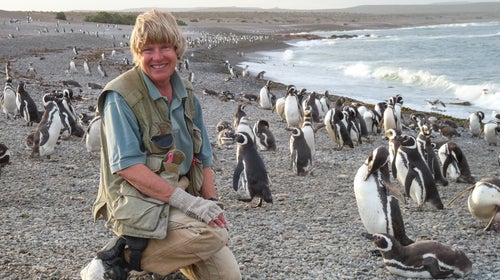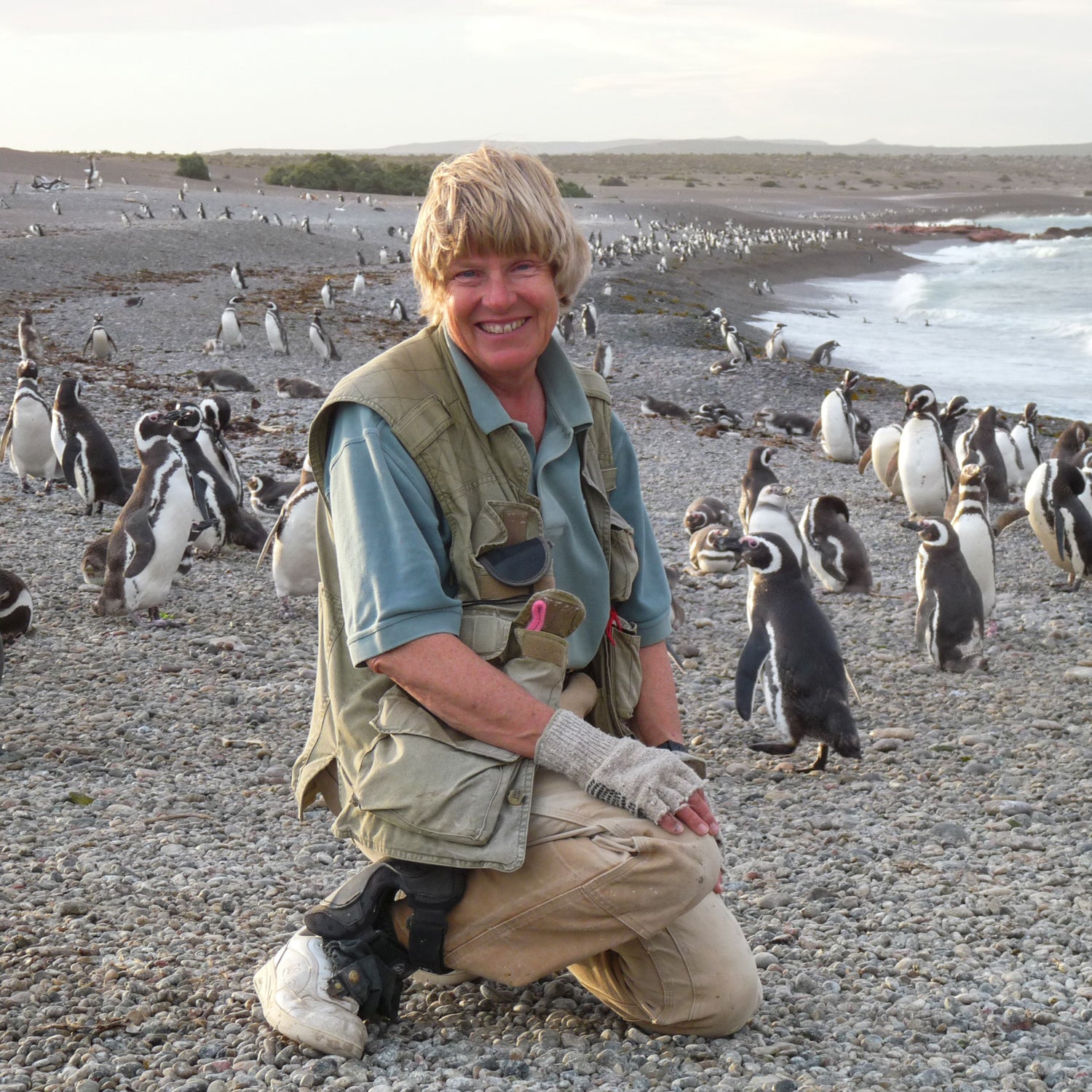“Conservation. It may be one of the most depressing fields to work in right now. The hurdles to overcome are enormous, the stakes higher than any time in human history. So why would anyone choose a career trying to protect wildlife and wild places?” So begins Wild Lives: Leading Conservationists on the Animals and the Planet They Love, a new book by Lori Robinson and Janie Chodosh. To answer this question, the authors interviewed nearly two dozen notable conservationists from around the world about their work and what drives them to keep going. Here are 11 people on the front lines of the fight to save the world’s flora and fauna.
Dee Boersma (above), 70, University of Washington conservation biologist
Boersma, a conservation biologist at the University of Washington, has studied Magellanic penguins in Punta Tombo, Argentina, for nearly 40 years. “Penguins are our ocean sentinels,” she says. “They help us understand the effects of pollution, overfishing, and climate change on the marine environment.”
Dave Parsons, 69, former Mexican Wolf recovery coordinator for the U.S. Fish and Wildlife Service
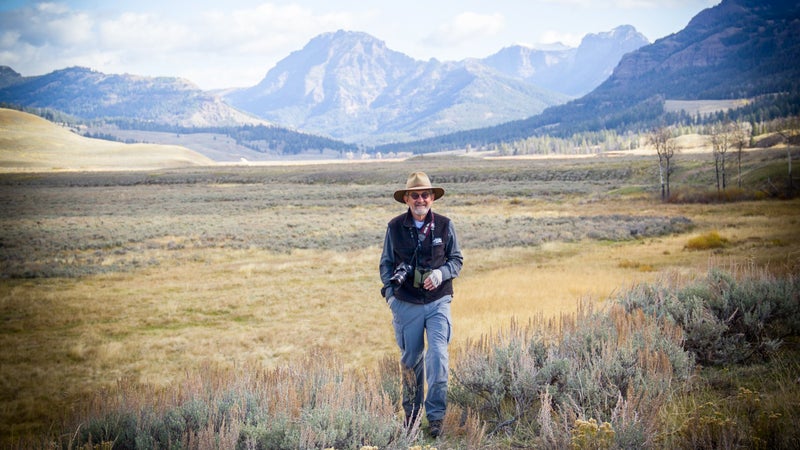
Parsons oversaw the release of 11 Mexican wolves from three different packs into the wild of Arizona’s Apache Forest while working for the USFWS. “I’ve spent 17 years years since my retirement trying to protect the Mexican wolves’ right to exist,” he says. “There are many people who want it to go extinct, but I’m still devoting my life to it.”
Anne Innis Dagg, 84, former University of Waterloo zoologist
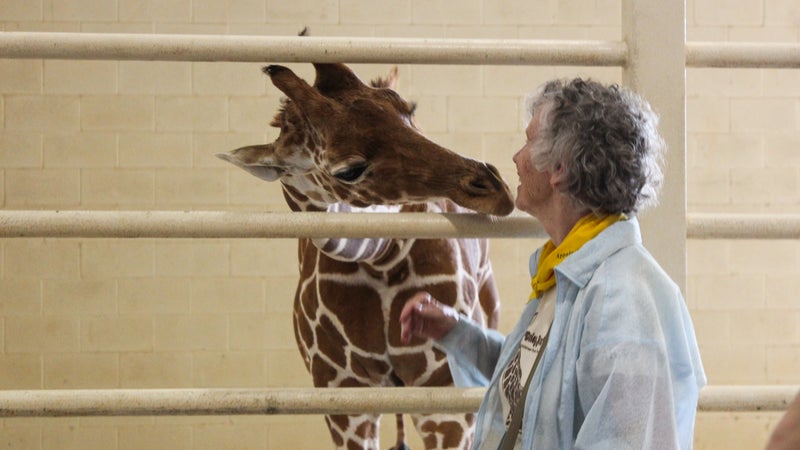
Dagg has researched giraffes for over six decades and has written 21 books about them, including the classic The Giraffe: Its Biology, Behavior, and Ecology. In Wild Lives she recalls the first time she saw a giraffe in the wild: “We drove along and there was a giraffe coming to drink in a small pool. It was the most beautiful animal I’d ever seen.”
Craig Packer, 66, ecologist and Lion Center director at the University of Minnesota
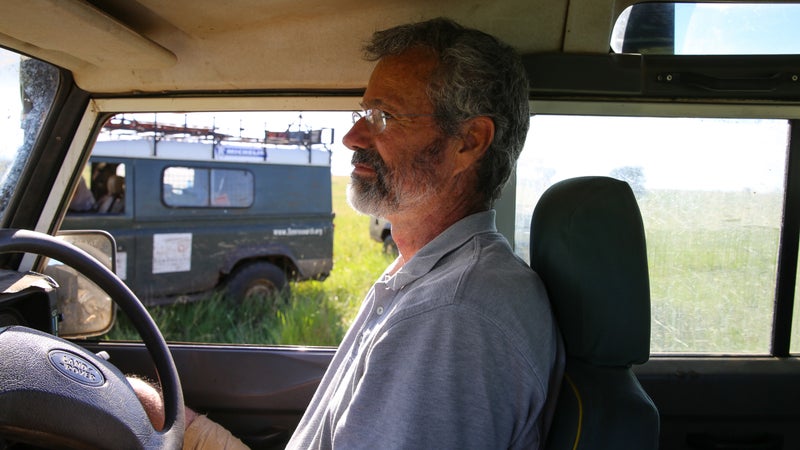
Packer has spent nearly a half a century studying lions in Tanzania and strategizing ways to protect them. His work led Botswana, Mozambique, Zambia, and Zimbabwe to all declare a minimum age at which lions can be hunted, and he continues to advocate for creating fenced areas where lions can roam without posing a threat to people. “Their population can rebound,” he says. “As long as you can look after the land, as long as you can keep the needs met for a large number of individuals, the population should be able to persist.”
Laurie Marker, 63, founder and executive director of the Cheetah Conservation Fund

Marker moved to Namibia in 1990 to study the wild cats and develop a permanent research center there. “I raised many different animals including guanacos, monkeys, boas, goats, and lions,” she says. “Then I met a cheetah cub named Khayam and I was allowed to care for her. One look into her deep amber eyes and I was in love.”
Meg Lowman, 63, ecologist and Global Initiatives director at the California Academy of Sciences
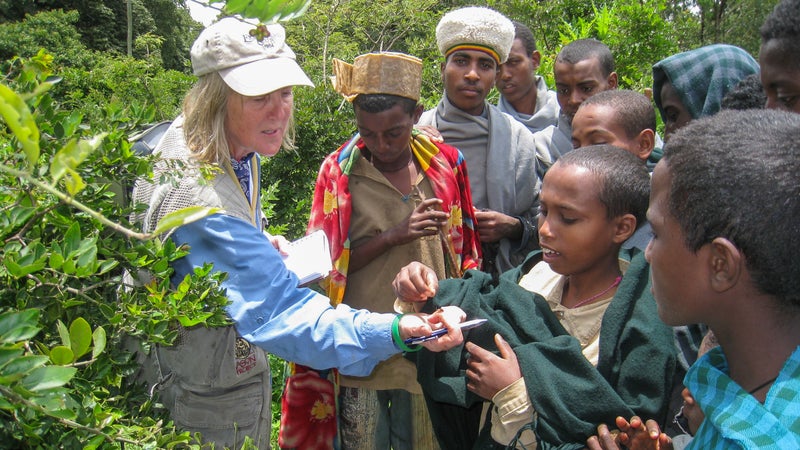
“Canopy Meg,” as Lowman is called, is a pioneer of canopy ecology. She is a senior scientist at the California Academy of Sciences in San Francisco and has spent 30 years working to map biodiversity in forest canopies. She is also an advocate for girls and minorities in science. “I feel a true sense of passion to serve as a role model and inspiration for all women in the world,” she says. “I try to be a good role model for the young women I encounter, so maybe they can gain advice and avoid some of the hurdles that I encountered.”
Megan Parker, 52, cofounder and director of Working Dogs for Conservation
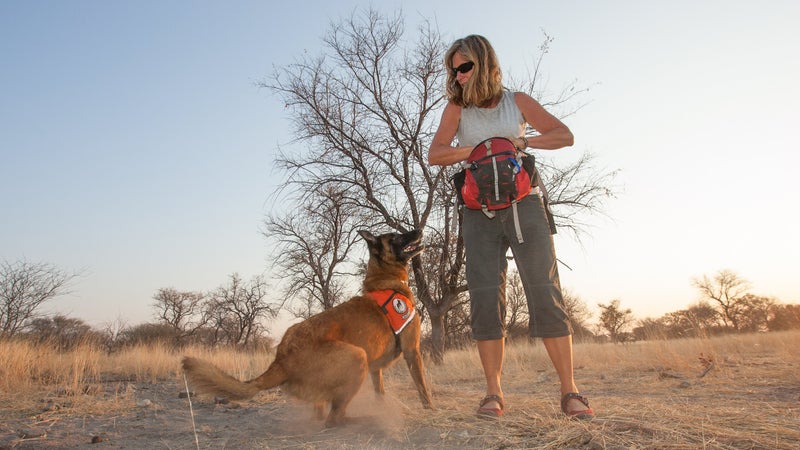
Parker and Working Dogs for Conservation developed the use of shelter dogs' extraordinary sense of smell to detect data that can be used in conservation efforts across the globe. This includes the scat of endangered species and invasive species poised to take over sensitive environments—like dyer’s woad, a nonnative weed that invaded the grasslands of Mount Sentinel in Missoula, Montana. “Our detection dogs were able to locate dyer’s woad at all reproductive stages, especially those that people can’t see.”
Mike Chase, 44, cofounder of Elephants Without Borders

Chase was the principal researcher and leader of the Great Elephant Census, the first aerial survey of Africa’s savanna elephants. “I was in complete awe when flying at a low level of 300 feet over one of the most spectacular wilderness areas in Africa,” says Chase. “It was breathtaking. I found it infectious. The survey enabled me to see clearly the country and the animals that roamed on it, and I realized that I had found my passion and possibly a means of contributing to conservation efforts in Botswana.”
Thomas Lovejoy, 76, conservation biologist and senior fellow at the United Nations Foundation

Thomas Lovejoy, the conservation biologist who coined the phrase “biological diversity,” conducts much of his field research in the Amazon and is credited with bringing public awareness to the issue of tropical deforestation. “I go to the Amazon with such frequency that I have given up explaining,” he says. “I just say I am always on my way to the Amazon.” He developed the public television series Nature and has authored five books on conservation and biodiversity.
Grace Ge Gabriel, Asia regional director for the International Fund for Animal Welfare

Gabriel has worked with the International Fund for Animal Welfare in Asia to protect animals in over forty countries. “In my line of work, we do see a lot of things that are really discouraging, but I relish the moments when I know I have influenced a change even in just one person,” she says.
Paul Hilton, 46, conservation photojournalist

Hilton uses his lens to capture the story of animals caught in the illegal wildlife trade. His photographs have been published in The New York Times, Newsweek, and Time. “I want people to view my images and understand what’s really going on out there,” he says.
